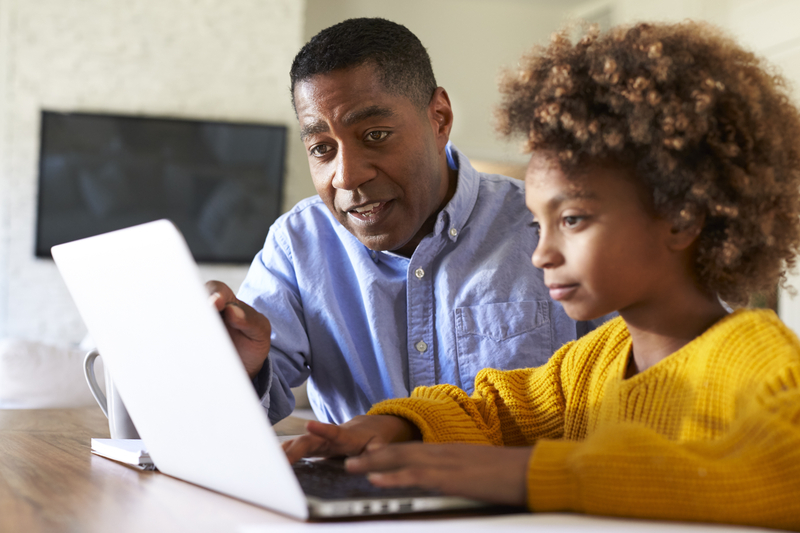The novel coronavirus outbreak created disarray and disappointment for many students. Forced to leave during the final weeks of the school year, students were left wondering about final grades and how the disruption would affect their graduation. Standardized college testing was postponed, and all sports and social activities were curtailed. Working parents have struggled to find childcare for children who are normally in school; and, just as importantly, they have worried about how to maintain progress in their children’s education. Francesca Donner (@FrancescaDonner) and Corinne Purtill (@corinnepurtill) report, “Classroom education around the world has come to a screeching halt. School closures in over 160 countries have separated a staggering 87 percent of the world’s student population from their peers and teachers, according to UNESCO. More than 55.1 million K-12 students in the United States are now out of school. With buildings closed, families are grappling with how to teach kids at home (and preserve everyone’s sanity).”[1]
Many U.S. school districts scrambled to provide online schooling; but, the results have varied. Where online schooling was made available, educators have often had to scramble to find creative ways to provide needy students with the tools they needed to remain engaged — including providing mobile Wi-Fi systems for neighborhoods lacking broadband access. On the bright side, parents, students, and teachers who do have broadband access can find online help for providing home schooling during the pandemic and beyond. According to Donner and Purtill, “The approaches to home schooling vary dramatically by school, grade and state. Some schools are having children log in to Zoom sessions for face-to-face online lessons, while others direct families to websites with activities for kids to do on their own. But all is not equal in-home learning. Not everyone has access to books, school supplies and Wi-Fi, with low-income families especially hard-hit. And public safety nets like libraries, where children might have gone in the past, have closed their doors.”
Learning at home
“With schools closing to stop the spread of coronavirus,” writes Lisa Tolin (@lisatolin), “you may find yourself working from home with a new side-gig: teacher.”[2] To help harried parents, Tolin offers ten suggestions for home schooling. They are:
1. Set up “school”. Check to see if your child’s school has established online classrooms. Tolin also writes, “Check with your child’s teacher or principal for guidance for a free home-school curriculum.” Setting up a specified area for school can also help your children understand when it’s for studying rather than playing. Anya Kamenetz (@anya1anya) and Cory Turner (@NPRCoryTurner) write, “Kids may need to move around during the day, but [Ana Homayoun, an educational coach,] suggests having one or two designated areas for learning.”[3]
2. Use free educational websites. There are dozens of websites educators and parents can use. The National School Choice Week website provides a list of 100 free online resources for schools shifting online during the coronavirus pandemic. Tolin adds, “Many educational websites are offering free subscriptions during school closures. The Facebook group Amazing Educational Resources gathered them into a public spreadsheet. It includes resources for reading, math, history, Chinese, coding, music and more.” She adds, “Prodigy Math, which is used by many school districts, has free video game style math learning.”
3. Watch webinars. Tolin notes there are many excellent videos online to help educators and parents with online learning. One of the easiest ways to find what you need is to visit YouTube’s Learn@Home website. Tolin notes, “The education company Hand2Mind launched a new Learn at Home platform with streaming lessons for grades K-5 and downloadable STEM activities. … Khan Academy is a great, free resource for instructional videos on many topics. [And] TED-Ed has video lessons and series by top educators, made into animated videos for kids.”
4. Play some read-alouds. If you have young students, read-alouds provide a good activity. Tolin notes, “Some of your children’s favorite authors are offering read-alouds during the crisis. This list of read-alouds from We Are Teachers is full of resources, and Kidlit TV has a library of read-alouds and activities.”
5. Listen to audiobooks and podcasts. If your students are older, you can find age-appropriate books for them to listen to. Tolin also notes, “There are plenty of educational and entertaining podcasts for kids, including NPR’s WOW in the World, Story Pirates and Brains On! ”
6. Check out Ebooks. The pandemic is also a great time to introduce or encourage children to read great books. Tolin notes, “Many libraries are closing, but online resources remain available. Check Libby, Kanopy, SimplyE and Hoopla to get free resources with your library card.
7. Print activity sheets. I’m a proponent of hands-on activities. That’s why I, along with a few colleagues, created The Project for STEM Competitiveness — a project-based, problem-solving approach to STEM education helping schools near where we live demonstrate to students that STEM subjects can be fun and applicable in their lives. Tolin notes, “Many children’s book authors offer free activity sheets on their websites. Jarrett Lerner, author of ‘Enginerds,’ is creating new worksheets every few days that let kids finish a comic or complete a drawing with their own silly ideas.”
8. Get physical. Tolin observes, “With kids kept indoors more than usual, don’t forget to provide plenty of wiggle time.” You should try and get children outside doing physical activities as well, but please ensure you keep them safe using social distancing. Children can be a prime source of spreading viruses.
9. Be creative. Tolin notes, “This whole exercise is going to require loads of creativity for any parent, and it’s a great opportunity for kids to get creative, too.” You might find great joy exploring your creative side and getting children to explore their creativity as well. If you don’t have the time, however, Tolin observes, “Kristin Bell and Dax Shepard are hosting ‘camp’ at Hello Bello, with singalongs, arts and crafts and storytimes on Instagram.”
10. Find educational screen time. Many people have found streaming services a life saver during the pandemic. Tolin notes, “There are plenty of quality films to get you through quarantine.”
Online learning can be effective
High among parents’ and educators’ concerns is whether online education can help students learn as effectively as in-class instruction. John Anderer reports, “For all of the awfulness, this coronavirus has brought, perhaps the way it has forced everyone to embrace online learning and work may end up being beneficial. For instance, consider the latest findings out of Cornell University regarding online STEM (science, technology, engineering, mathematics) courses. Researchers found that not only did students learn just as efficiently via online courses as physical classrooms but such classes are also much cheaper for universities to put together.”[4] I’m assuming this holds true for students in primary education as well. Since no one really knows when it will be safe to relax social distancing, educators are making plans to continue online education into the fall. To help, Google has established a temporary hub of information and tools to help teachers during the coronavirus (COVID-19) crisis.
When students are learning from home, parents have an even larger role to play in their child’s education. Kamenetz and Turner offer a few more tips to help parents cope. The first suggestion is: Know your kid. They explain, “Strong learners can do even better independently, but weaker learners may really struggle. … Different kids will do best in different learning environments. If your child learns better in groups, try a Zoom study session with a fellow classmate.” They also suggest quarantine is “a good time for passion projects.” They explain, “This is a good time for kids to pursue interests they haven’t had time to focus on in the past. It could be cooking, building in Minecraft, or drawing. Bonus: If it’s something they’re truly interested in, you won’t have to bug them to do it.” They also suggest having a daily routine can be beneficial. They write, “It’s OK to let your kids sleep in a little later than usual — research shows many of our children and teens are chronically sleep-deprived. Plus, most homeschoolers don’t teach seven hours straight a day. Shoot for two to four good academic hours instead.” If you have a child who is on the spectrum, Joe Supan (@joesupan) urges you to take special care. He writes, “People with autism spectrum disorder are at higher risk for cyberbullying and internet addiction, but there are also many benefits to internet use.”[5] He provides some excellent tips about what to be on the lookout for and some great tips on how to teach internet safety to your child. You can read his article by following this link.
Concluding thoughts
Tolin concludes, “Be kind to yourself; remember this is temporary and no one expects perfection. If you make good use of the new Disney Plus streaming service, your kids may remember it as the best school year ever.” Kamenetz and Turner agree. “Be forgiving of yourself and your kid,” they write. “This is a very stressful time. If you need to put on a movie to get through the day, that’s absolutely fine. Homayoun says, ‘You don’t have to home school if it’s really going to cause severe emotional distress for everyone involved. And I think that’s really important for parents to hear right now because we all feel so much personal pressure.'” Do the best you can and take advantage of the many resources you have available.
Footnotes
[1] Francesca Donner and Corinne Purtill, “Figuring Out Home Schooling in the Age of Coronavirus,” The New York Times, 28 March 2020.
[2] Lisa Tolin, “How to home-school during the coronavirus crisis with free resources,” NBC Today Show, 16 March 2020.
[3] Anya Kamenetz and Cory Turner, “Tips For Homeschooling During Coronavirus,” NPR, 24 March 2020
[4] John Anderer, “Way of the future? Students learn just as well online, Cornell study finds,” The Ladders, 10 April 2020.
[5] Joe Supan, “Safety online: A guide for people with autism spectrum disorder,” Allconnect, 16 May 2021.





